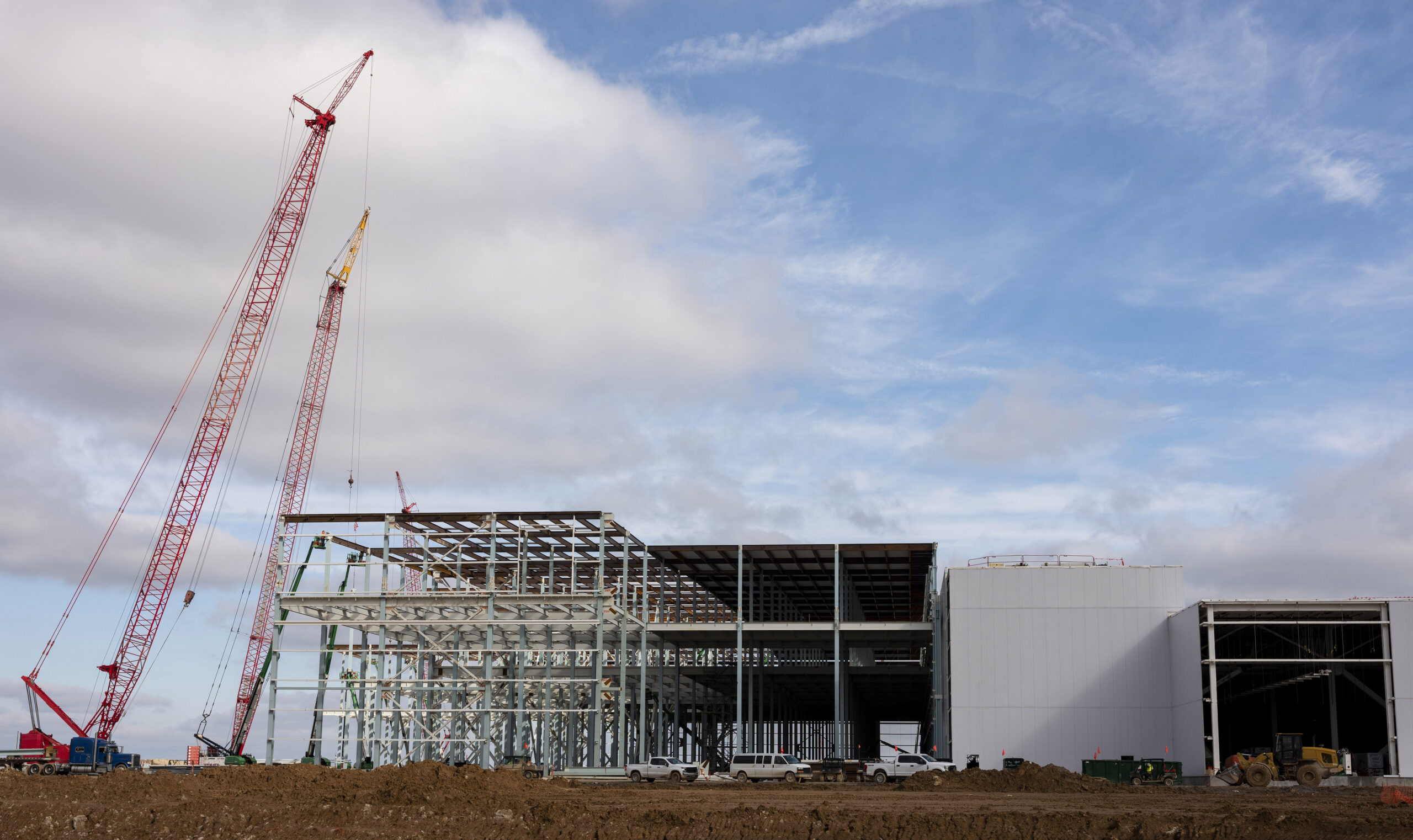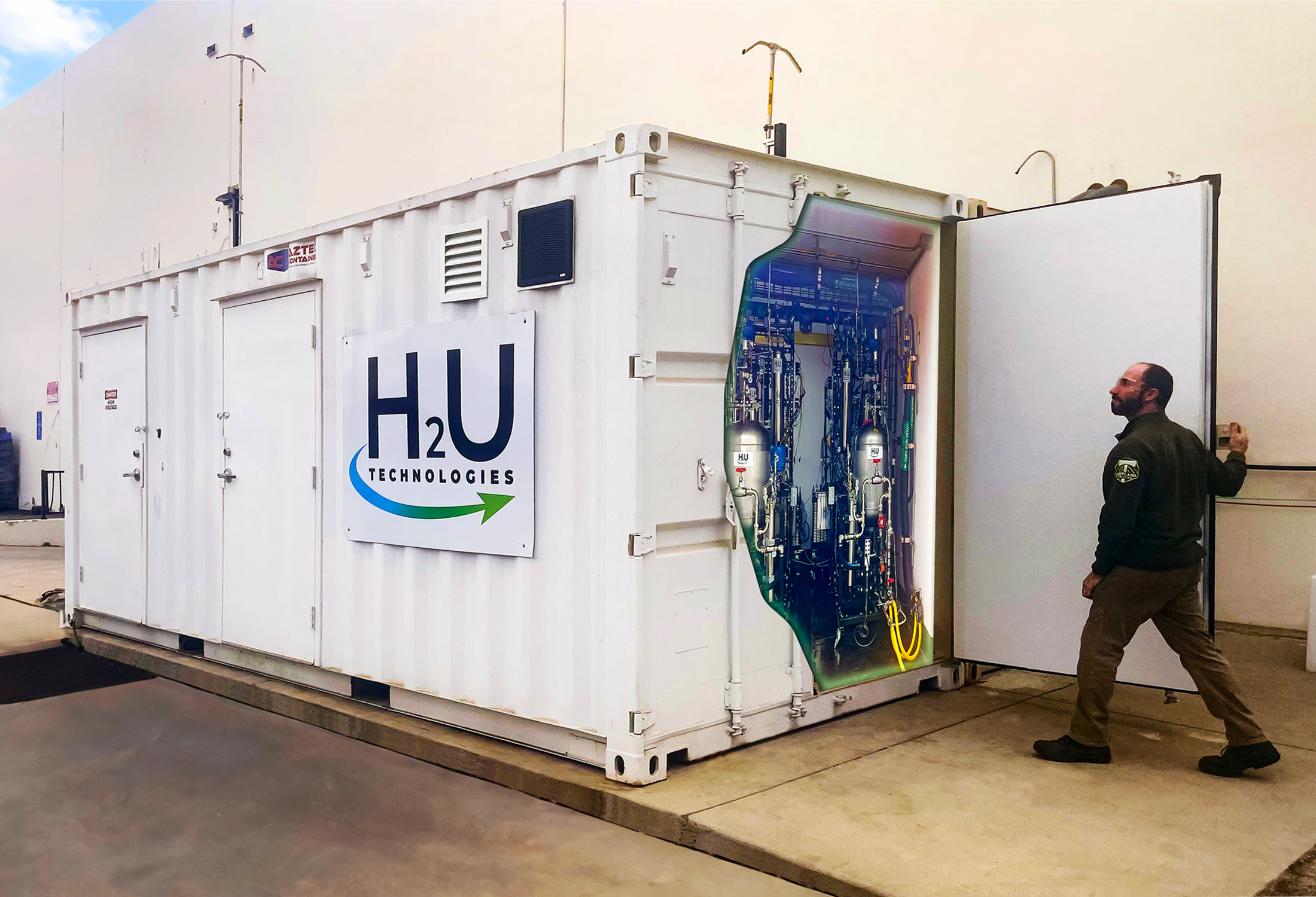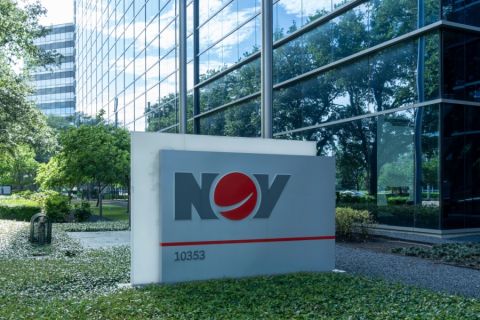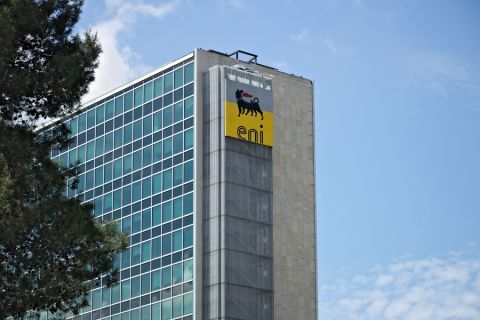BlueOval SK, the joint venture (JV) of Ford Motor Co. and South Korea’s SK On, has secured a conditional commitment from the U.S. Department of Energy (DOE) for a loan of up to $9.2 billion to build three battery manufacturing plants.
The loan commitment marks the biggest of its kind from the government’s loan program.
It comes as the U.S. strives to bolster electric vehicle (EV) sales to at least half of all new car sales by 2030 amid a push to hit net-zero electricity by 2035. The plants are expected to enable more than 120 gigawatt hours (GWh) of battery production annually, displacing more than 455 million gallons of gasoline per year during the vehicles’ lifetime, according to the DOE’s Loan Programs Office.
“While this conditional commitment demonstrates DOE’s intent to finance the project, several steps remain for the project to reach critical milestones, and certain conditions must be satisfied before DOE issues a final loan,” LPO said in the release.
The new factories, one in Tennessee and two in Kentucky, will supply future Ford and Lincoln EV lines while creating about 5,000 construction jobs and 7,500 jobs at the factories when they begin operations. Since the facilities are located in disadvantaged communities, they also support President Biden’s Justice40 Initiative, putting federal financing incentives within reach.

Construction is already underway at the $5.8 billion BlueOval SK Battery Park in Kentucky, where the twin plants will be located. Construction has also started on the $5.6 billion BlueOval City in Tennessee, where Ford will produce its next-generation electric truck. SK On will develop and manufacture EV batteries at both sites, according to Ford.
The automaker has said it aims to sell more than 2 million EVs worldwide by 2026, up from about 132,000 in 2022, delivering an adjusted EBITDA margin of 10%.
Here is a look at other renewable energy news this week.
RELATED
Nabors Launches Second Energy Transition SPAC
Blackstone Pumps $1 Billion More Into Renewables Developer Invenergy
Energy Storage
Chinese Battery Giant CATL Seals $1.4B Deal to Develop Bolivia Lithium
(Reuters) Chinese battery giant CATL confirmed a $1.4 billion investment to help develop Bolivia’s huge but largely untapped reserves of lithium, cementing a June 18 partnership with the government made in January.
The agreement connects CATL, the world’s largest manufacturer of electric vehicle batteries, with Bolivia’s salt flats that are home to the world’s largest lithium resources.
Following a meeting with CATL executives on June 18, Bolivian President Luis Arce confirmed the commitment to build two lithium plants to extract minerals from the country's Uyuni and Oruro salt flats.
“We met with Burton Roy (Yu Bo), CEO of the Investment Committee of CATL to confirm the investment of $1.4 billion,” the president said via Twitter, adding that as partners they would “evaluate the possibility” of increasing investments to 2028.
Construction of both plants could begin as soon as July, according to the country’s energy ministry, with overall investment climbing to around $9.9 billion during the project's industrial process.
The announcement June 18 follows a partnership deal signed on January 20 between Bolivia's state-run lithium company, Yacimientos del Litio Bolivianos (YLB), and a Chinese consortium, in which CATL would invest over $1 billion in the project’s first stage in exchange for rights to develop the two lithium plants, which could each produce up to 25,000 mt of battery-grade lithium carbonate per year.
CATL does not currently produce any lithium, although it has invested in a number of Chinese projects.
Lithium resources in Bolivia's iconic salt flats are estimated at 21 MMmt, according to the U.S. Geological Survey, but as yet has almost no industrial production or commercially viable reserves.
RELATED
Lyten’s Pilot Plant to Transform Natgas to Lithium-sulfur Batteries
Geothermal
Chevron, MOECO Team Up to Explore Advanced Geothermal Technology
Chevron New Energies said June 21 its subsidiary in Japan and Mitsui Oil Exploration Co. Ltd. (MOECO) will work together to pilot test advanced closed loop geothermal technology (ACL).
Unlike conventional geothermal technology, in which hot water or steam is extracted from underground reservoirs, ACL utilizes a loop of underground wells for subsurface heat exchange through conduction. A working fluid from the surface is circulated through the wells to generate electricity.
“Chevron and MOECO believe that geothermal can be a significant enabler in Japan’s lower carbon and net zero journey,” said Barbara Harrison, vice president of offsets and emerging for Chevron New Energies. “Geothermal development needs to be carried out with the final customer in mind and with consideration of potential impacts to the environment and the local community.
Looking to derisk, scale and commercialize the technology, the companies plan to carry out the pilot test in the Niseko region of Hokkaido, Japan. Commercial applications will be considered based on knowledge gained from the pilot and elsewhere.
“We expect to open up a new geothermal business by collaborating with Chevron New Energies, which has advanced technology and extensive experience to tackle this challenging project,” said MOECO CEO Hirotaka Hamamoto. “We, MOECO, a member of the Mitsui & Co.’s group company, aim to contribute to the stable supply of energy, achieving improved standards of living, and sustainable development of society through the promotion of renewable energy projects such as geothermal power generation.”
Hydrogen

H2U Technologies Advances Iridium-free Electrolyzer
Electrolyzer developer H2U Technologies has successfully demonstrated a commercial proton exchange electrolyzer that does not rely on iridium catalysts, the company said June 22, marking an industry first.
The California-based company said it has scaled the technology to a 200-kilowatt electrolyzer system. The breakthrough comes after developers last year proved the efficacy of the system’s non-iridium catalyst materials in small-scale electrolyzer stacks.
Electrolyzers, which split water molecules into oxygen and hydrogen atoms using electricity, are key in producing green hydrogen. The technology, however, relies on iridium—a scarce and high-cost platinum metal—as a catalyst to make the chemical reaction happen.
H2U said its technology will provide another option as the industry looks to overcome the expected challenge of meeting future rising demand amid scarce iridium supplies.
“This is a significant milestone for H2U on our path to solving a key problem facing the hydrogen industry: the dependency on scarce and precious materials currently needed to make hydrogen. We and others believe H2U’s non-iridium PEM electrolyzers have the potential to transform the green hydrogen industry,” H2U Technologies CEO Mark McGough said in a news release. “Our breakthrough technology will bring down gas production costs and alleviate supply chain constraints, making green hydrogen more accessible and cost-effective for a wide range of applications.”
The team plans to continue collecting data to further validate the non-iridium catalysts’ durability and performance at commercial scale. Lessons learned will be incorporated into the design review and construction of the first external proof-of-concept units set to ship by year-end, H2U said.
Oman Signs $10B in Deals for Two Green Hydrogen Projects
Oman is making progress on its goal to produce at least 1 million tons of renewable hydrogen per year by 2030, awarding this week two hydrogen projects valued at more than $10 billion.
The two agreements signed this week are part of a public auction round. The consortium led by ENGIE and South Korea’s POSCO Holdings plan to produce more than 200,000 tonnes per annum of green hydrogen by 2030 at a plant in the Al Wusta Governorate. The companies plan to use more than 5.2 gigawatts (GW) of wind and solar energy to produce hydrogen, which will be converted to ammonia and exported, according to a news release.
The second agreement is for a project planned by the Hyport Duqm consortium, Oman’s OQ Alternative Energy and Belgium’s DEME Concessions NV. The consortium aims to produce more than 50,000 tonnes per annum of green hydrogen by 2029 in the project’s first phase, the release stated.
The agreements were announced as state-owned Hydrom gears up for its second green hydrogen auction, during which up to three blocks in the Dhofar region will be awarded by the end of the first quarter of 2024.
TotalEnergies, VNG Team Up to Decarbonize Leuna Refinery
German natural gas distributor VNG has partnered with TotalEnergies to decarbonize its Leuna refinery in Germany with green hydrogen.
The move is expected to lower the site’s annual CO2 emissions by up to 80,000 tonnes by 2030.
As part of the agreement, VNG and its partner Uniper will use a 30-MW electrolyzer to produce green hydrogen at the Bad Lauchstädt Energy Park, which will be connected by pipeline to the Leuna refinery.
“This project is fully in line with TotalEnergies' ambition to decarbonize all hydrogen used in its European refineries by 2030,” Jean-Marc Durand, senior vice president for TotalEnergies Refining Base Chemicals Europe, said in the release. “Our ambition is to replace the gray hydrogen with low carbon hydrogen, representing a reduction of 3 million tons of CO2 per year by 2030.”
Solar
Vikram Solar-backed Venture to Invest $1.5B in New US Factories
(Reuters) A new venture backed by Indian solar panel maker Vikram Solar Ltd. said on June 22 it will invest up to $1.5 billion in the U.S. solar energy supply chain, beginning with a factory in Colorado next year.
The newly formed company, VSK Energy LLC, aims to leverage India's extensive solar manufacturing know-how in the U.S. push to build a clean energy manufacturing sector to compete with China.
The announcement is the latest by an overseas manufacturer seeking to capitalize on incentives in President Joe Biden’s landmark climate change law, the Inflation Reduction Act (IRA), to boost renewable energy production.
VSK is a JV between Kolkata-based Vikram and two New York-based partners—sustainability-focused private equity firm Phalanx Impact Partners and Das & Co., an investment and development company with solar holdings in both the United States and India.
“It’s a great thing for us to be bringing an Indian company to the table here,” said Sriram Das, a managing director at Das & Co. and chairman of the JV. “You’ve seen a number of Indian companies get into the manufacturing space and do quite well, and Vikram is the best of them.”
The company will begin producing modules in Brighton, Colorado, in 2024 and plans to open a second facility in an undisclosed southern state in 2025 that will produce cells, wafers and ingots—the building blocks for solar panels.
The $250 million Colorado facility will create more than 900 jobs and be capable of producing 2 GW of modules a year initially, with plans to double that amount.
Wind
Copenhagen Infrastructure Partners Invests $350M in Wind Projects Offshore Korea
Fund manager Copenhagen Infrastructure Partners (CIP) said June 21 it has invested $350 million in gigawatt-scale fixed-bottom and floating wind projects offshore South Korea.
CIP’s offshore wind partner Copenhagen Offshore Partners will develop the projects in the Jeonnam Province, pushing the country toward its offshore wind target of 14.3 GW by 2030.
Funds will go toward the 99-megawatt, fixed-bottom Jeonnam 1, a JV between SK E&S and CIP being developed in the Yellow Sea as well as other projects in Shinan County, Yeonggwang County and the Ulsan region.
“By materializing our GW-scale project we hope to create momentum in the Korean offshore wind market,” COP Korea Co-CEO David Taesung Yoo said in the release.
CIP, which entered the Korean wind market in 2018, also said its energy transition fund is looking to develop its Power-to-X business and expand its concept of “energy island” to Korea. The concept, being carried out by CIP offshore Denmark, involves using high-voltage direct current technology to bundle energy from offshore windfarms and transporting the electricity onshore.
Reuters contributed to this report.
Recommended Reading
NOV Announces $1B Repurchase Program, Ups Dividend
2024-04-26 - NOV expects to increase its quarterly cash dividend on its common stock by 50% to $0.075 per share from $0.05 per share.
Repsol to Drop Marcellus Rig in June
2024-04-26 - Spain’s Repsol plans to drop its Marcellus Shale rig in June and reduce capex in the play due to the current U.S. gas price environment, CEO Josu Jon Imaz told analysts during a quarterly webcast.
US Drillers Cut Most Oil Rigs in a Week Since November
2024-04-26 - The number of oil rigs fell by five to 506 this week, while gas rigs fell by one to 105, their lowest since December 2021.
CNX, Appalachia Peers Defer Completions as NatGas Prices Languish
2024-04-25 - Henry Hub blues: CNX Resources and other Appalachia producers are slashing production and deferring well completions as natural gas spot prices hover near record lows.
Chevron’s Tengiz Oil Field Operations Start Up in Kazakhstan
2024-04-25 - The final phase of Chevron’s project will produce about 260,000 bbl/d.





